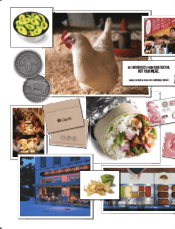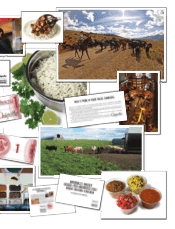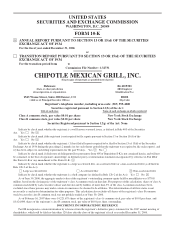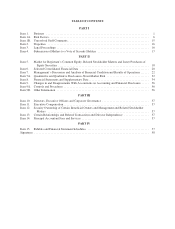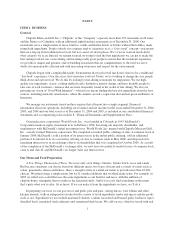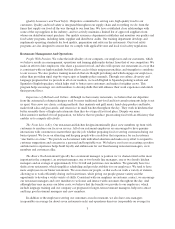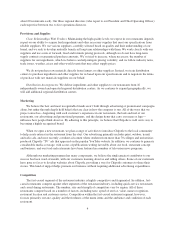Chipotle 2006 Annual Report Download - page 10
Download and view the complete annual report
Please find page 10 of the 2006 Chipotle annual report below. You can navigate through the pages in the report by either clicking on the pages listed below, or by using the keyword search tool below to find specific information within the annual report.about 60 restaurants each). Our three regional directors (who report to our President and Chief Operating Officer)
each supervise between two to five operations directors.
Provisions and Supplies
Close Relationships With Vendors. Maintaining the high quality levels we expect in our restaurants depends
in part on our ability to acquire fresh ingredients and other necessary supplies that meet our specifications from
reliable suppliers. We use various suppliers, carefully selected based on quality and their understanding of our
brand, and we seek to develop mutually beneficial long-term relationships with them. We work closely with our
suppliers and use a mix of forward, fixed and formula pricing protocols, although we do not have long-term
supply contracts or guaranteed purchase amounts. We’ve tried to increase, where necessary, the number of
suppliers for our ingredients, which we believe can help mitigate pricing volatility, and we follow industry news,
trade issues, weather, crises and other world events that may affect supply prices.
We do not purchase raw materials directly from farmers or other suppliers. Instead, we train distribution
centers to purchase ingredients and other supplies for us based upon our specifications and to negotiate the terms
of purchase with raw materials suppliers on our behalf.
Distribution Arrangements. We deliver ingredients and other supplies to our restaurants from 16
independently owned and operated regional distribution centers. As we continue to expand geographically, we
will add additional regional distribution centers.
Marketing
We believe the best and most recognizable brands aren’t built through advertising or promotional campaigns
alone, but rather through deeply held beliefs that are clear in how the company is run. All of the ways that we
project ourselves—beginning with each customer’s experience in our restaurants, the look and feel of our
restaurants, our advertising and promotional programs, and the design items that carry our name or logo—
influence how people think about us. By adhering to this principle, we believe that Chipotle is well on its way to
becoming a highly recognized brand.
When we open a new restaurant, we plan a range of activities to introduce Chipotle to the local community
to help create interest in the restaurant from the start. Our advertising primarily includes print, outdoor, transit
and radio ads, and most recently a student ad contest where students from more than 70 colleges and universities
produced Chipotle “TV” ads that appeared on the popular YouTube website. In addition, we continue to generate
considerable media coverage, with scores of publications writing favorably about our food, restaurant concept
and business, and our food and restaurants have been featured in a number of television news programs.
Although our marketing program has many components, we believe the single greatest contributor to our
success has been word-of-mouth, with our customers learning about us and telling others. Some of our customers
have gone so far as to develop websites about Chipotle, providing a way for Chipotle customers to share their
stories. This kind of support helps promote our business without requiring additional advertising expenditures.
Competition
The fast-casual segment of the restaurant industry is highly competitive and fragmented. In addition, fast-
casual restaurants compete against other segments of the restaurant industry, including quick-service restaurants
and casual dining restaurants. The number, size and strength of competitors vary by region. All of these
restaurants compete based on a number of factors, including taste, speed of service, value, name recognition,
restaurant location and customer service. Competition within the fast-casual restaurant segment, however,
focuses primarily on taste, quality and the freshness of the menu items and the ambience and condition of each
restaurant.
4



